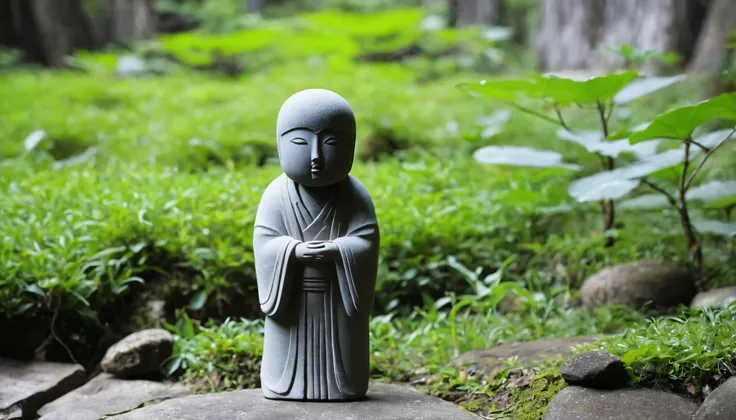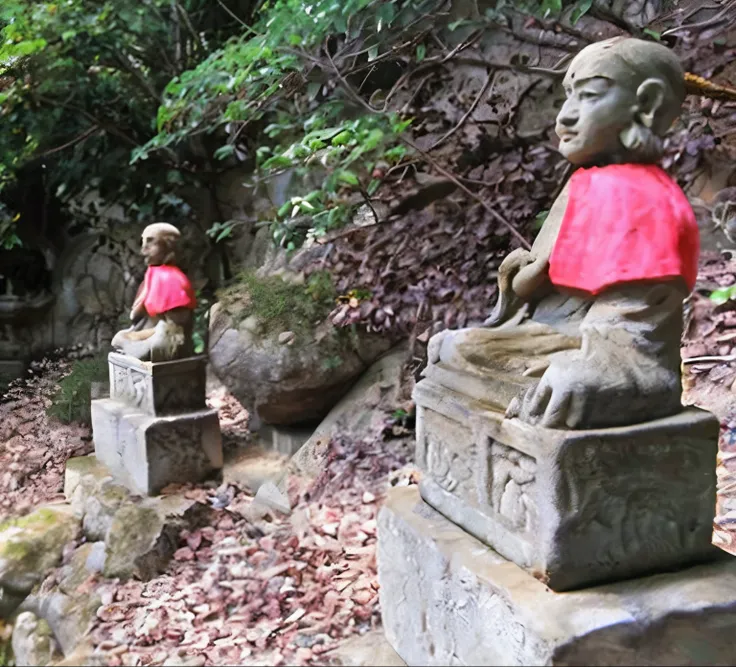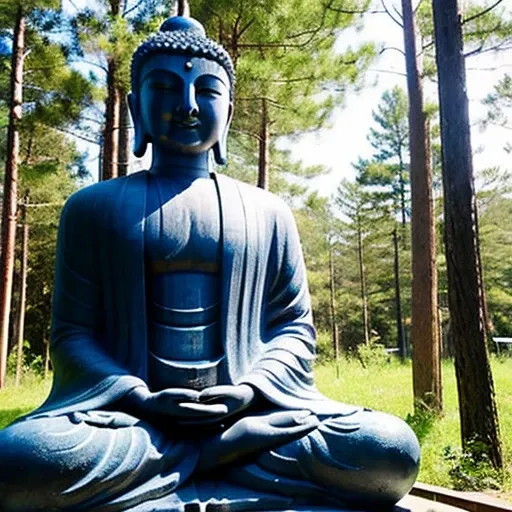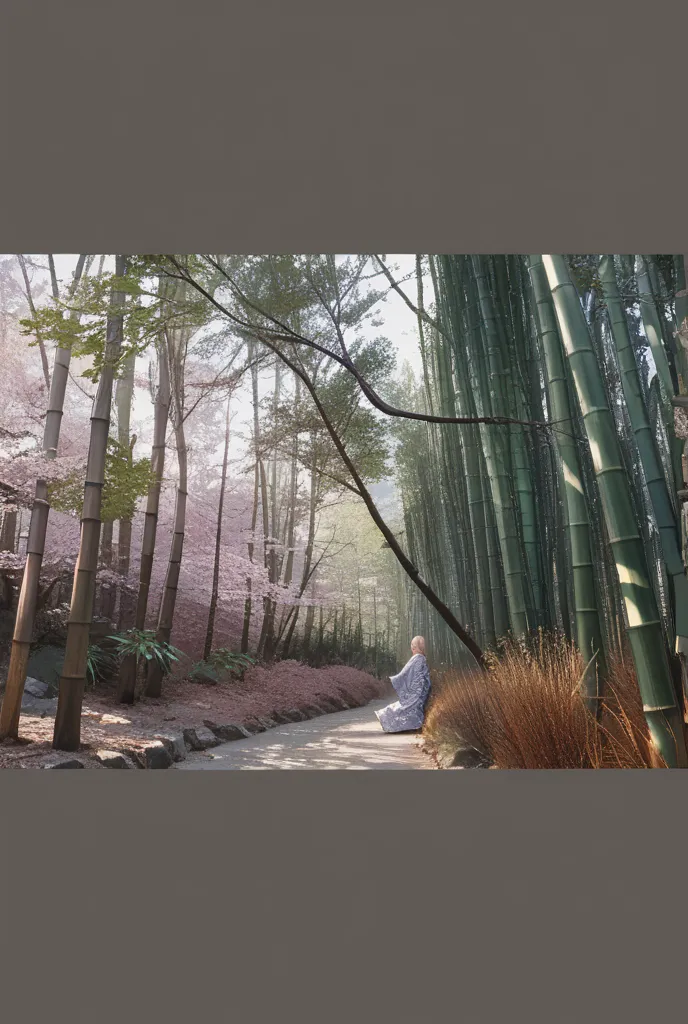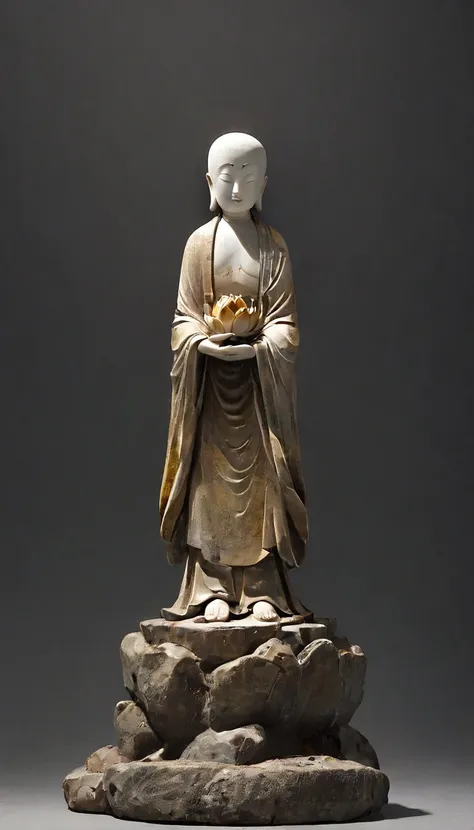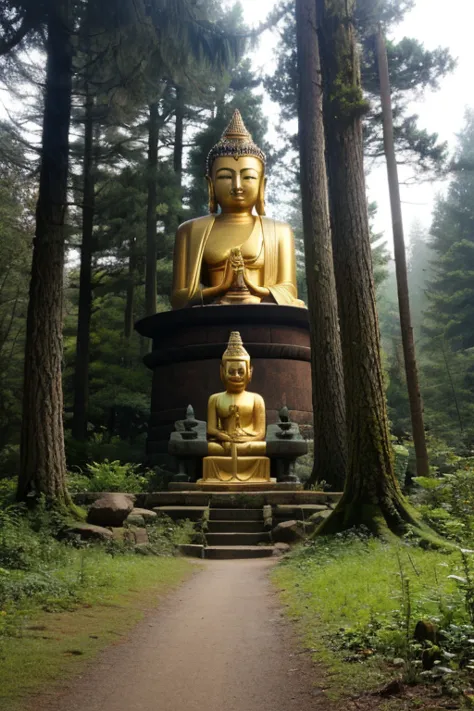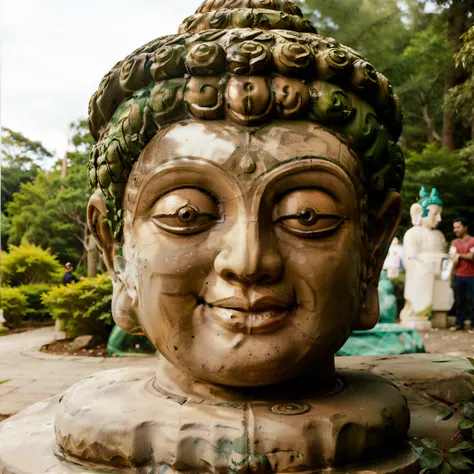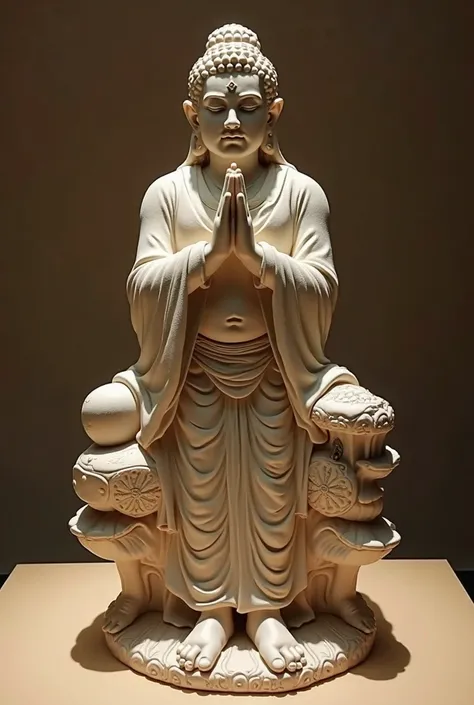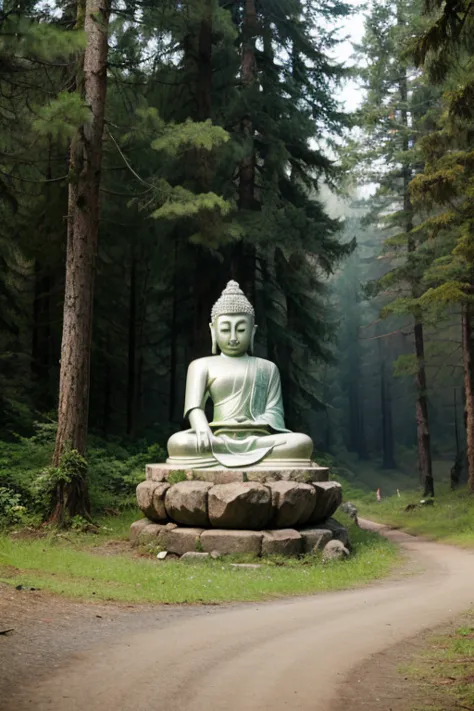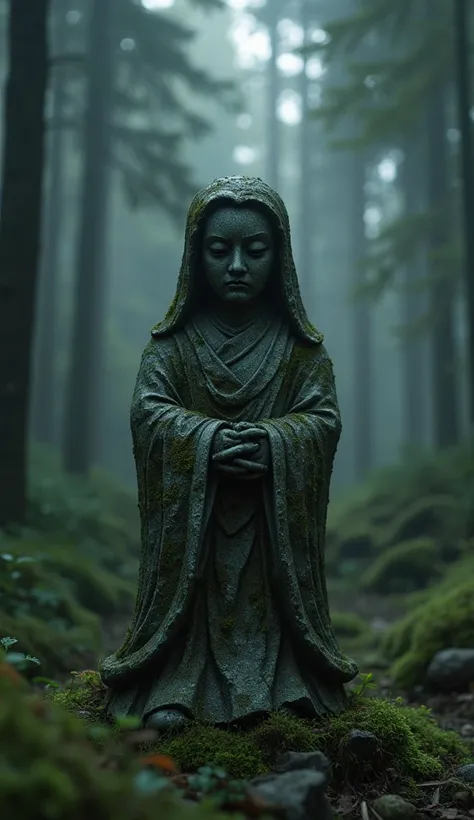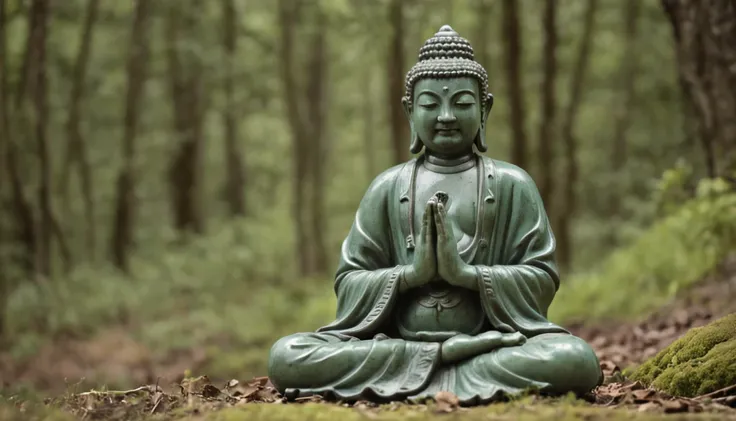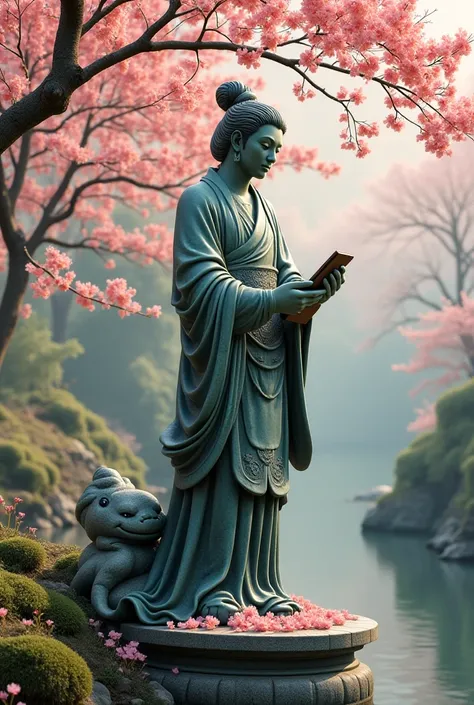There is a statue of a woman sitting on a rock
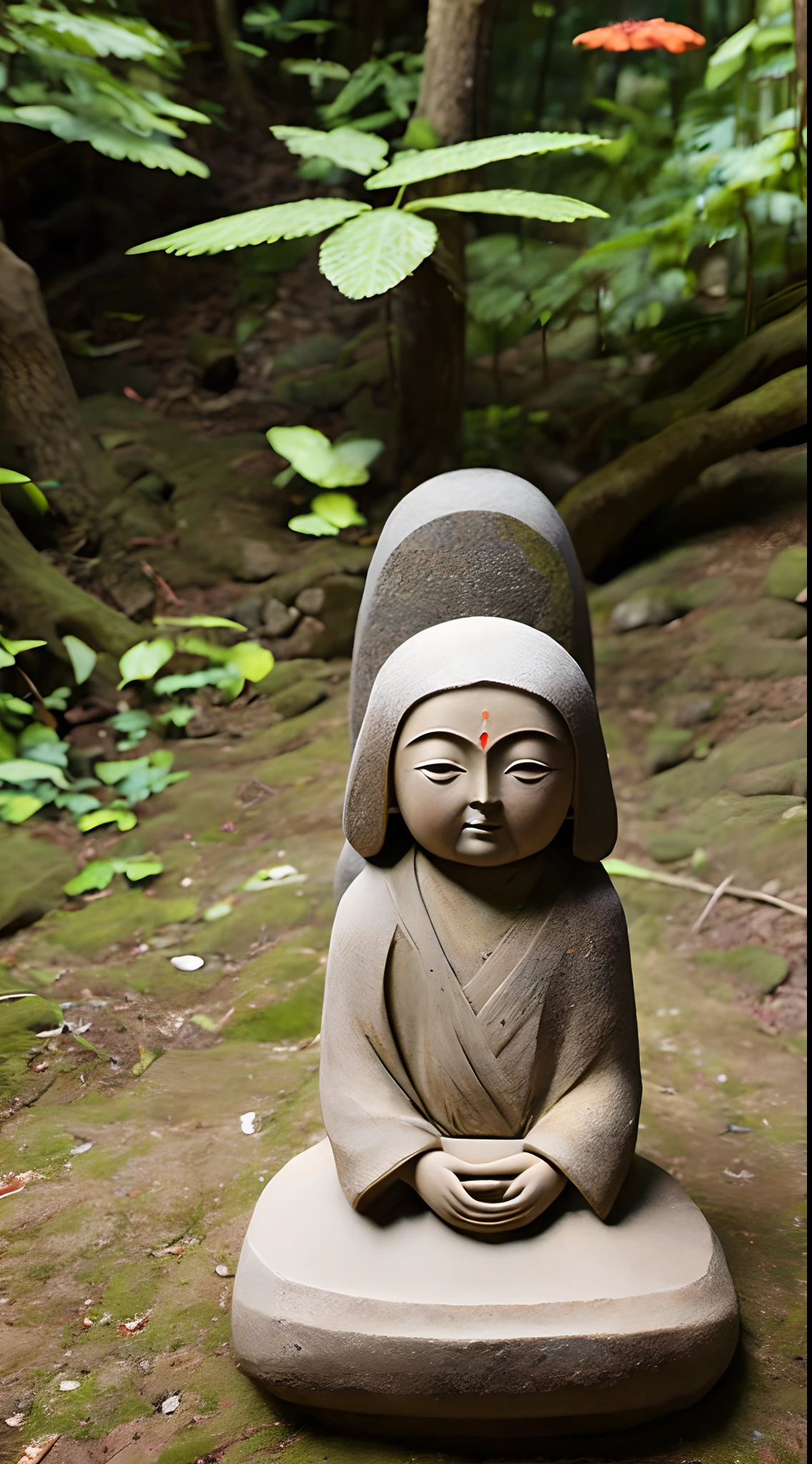
8k, Back gratnd is white, Jizo Bosatsu, also known as Jizo-sama, is a bodhisattva in Mahayana Buddhism. He is one of the most popular and beloved figures in Japanese Buddhism, and is often depicted as a monk with a shaved head and a simple robe. Jizo is known for his vow to save all sentient beings, especially children and those in the afterlife. In Japanese, the name "Jizo" means "earth storehouse." This is a reference to Jizo's vow to store the merits of his good deeds in order to use them to help others. Jizo is also known as "Ksitigarbha" in Sanskrit, which means "earth womb." This name reflects Jizo's compassion for all living beings, which he sees as his children. Jizo is often depicted with a number of objects, including a staff, a lotus flower, and a bottle of water. The staff represents Jizo's strength and power to help others. The lotus flower represents enlightenment, and the bottle of water represents Jizo's compassion for those who are suffering. Jizo is worshipped in a variety of ways in Japan. He is often prayed to for protection for children, for safe travel, and for good health. Jizo is also worshipped as a guardian of the dead, and many people visit Jizo statues to pray for the souls of their loved ones. Here is a more detailed explanation of Jizo's role in Buddhism: Jizo's vow: Jizo is known for his vow to save all sentient beings, especially children and those in the afterlife. This vow is based on the Buddhist concept of compassion, which is the desire to help others. Jizo's role in the afterlife: Jizo is often depicted as a guide for those who have died. He is believed to help these souls to find their way to a better rebirth. Jizo's worship in Japan: Jizo is one of the most popular and beloved figures in Japanese Buddhism. He is worshipped in a variety of ways, including prayer, offerings, and pilgrimages. I hope this helps! Let me know if you have any other questions.
Prompts
Copiar prompts
8k
,
Back gratnd is white
,
Jizo Bosatsu
,
also known as Jizo-sama
,
is a bodhisattva in Mahayana Buddhism
.
He is one of the most popular and beloved figures in Japanese Buddhism
,
and is often depicted as a monk with a shaved head and a simple robe
.
Jizo is known for his vow to save all sentient beings
,
especially children and those in the afterlife
.
In Japanese
,
the name "Jizo" means "earth storehouse
.
" This is a reference to Jizo's vow to store the merits of his good deeds in order to use them to help others
.
Jizo is also known as "Ksitigarbha" in Sanskrit
,
which means "earth womb
.
" This name reflects Jizo's compassion for all living beings
,
which he sees as his children
.
Jizo is often depicted with a number of objects
,
including a staff
,
a lotus flower
,
and a bottle of water
.
The staff represents Jizo's strength and power to help others
.
The lotus flower represents enlightenment
,
and the bottle of water represents Jizo's compassion for those who are suffering
.
Jizo is worshipped in a variety of ways in Japan
.
He is often prayed to for protection for children
,
for safe travel
,
and for good health
.
Jizo is also worshipped as a guardian of the dead
,
and many people visit Jizo statues to pray for the souls of their loved ones
.
Here is a more detailed explanation of Jizo's role in Buddhism:
Jizo's vow: Jizo is known for his vow to save all sentient beings
,
especially children and those in the afterlife
.
This vow is based on the Buddhist concept of compassion
,
which is the desire to help others
.
Jizo's role in the afterlife: Jizo is often depicted as a guide for those who have died
.
He is believed to help these souls to find their way to a better rebirth
.
Jizo's worship in Japan: Jizo is one of the most popular and beloved figures in Japanese Buddhism
.
He is worshipped in a variety of ways
,
including prayer
,
offerings
,
and pilgrimages
.
I hope this helps
!
Let me know if you have any other questions
.
INFO
Checkpoint & LoRA
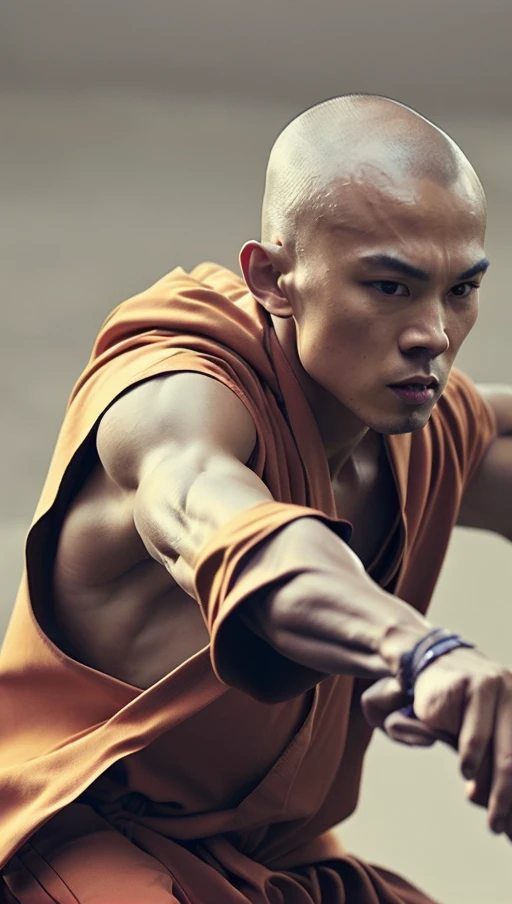
Checkpoint
rMada Merge - SD 2.1 768
comentário(s)
0
3
0












